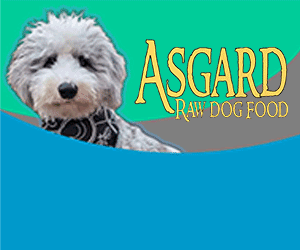By Doug Knueven, DVM, CVA, CVC, CVCH
For the ancient Chinese, the maintenance of health was of supreme importance. Healthcare was not something they went to a doctor to get; it was a way of life. These wise people meditated, used massage, herbs and acupuncture, and did tai chi (gentle exercises) on a regular basis not just to treat disease, but to maintain health. In addition to these therapies, the Chinese considered every meal they ate as a form of treatment for their bodies.
The Chinese discovered that different foods had different energetic effects on the body. They worked out an elaborate diet ingredient classification system to guide them in eating the right foods for any given bodily disharmony. This Chinese food therapy method can be applied to our pets to benefit their health as well.
The intricacies of Chinese food therapy can make the therapy difficult to apply. The good news is that eighty percent of the value of Traditional Chinese Veterinary Medicine (TCVM) food therapy is simply based on balancing bodily heating and cooling mechanisms.
From a TCVM point of view, there are foods that are warming, foods that are cooling, and foods that are neutral. To say that a food is warming does not necessarily mean that it creates a warm or hot sensation in the mouth. The Chinese determined that some foods produced a warming influence in the body while others created a cooling response. Warming foods are used to counterbalance cold conditions. Cooling foods are used to bring a hot condition down in temperature. Neutral foods are given when everything is on an even keel.
Hot conditions can range in intensity. Some pets seek cool surroundings and pant a lot. A “hot” pet may overheat easily and feel hot to the touch. In more severe cases, the heat may manifest as red, smelly skin rashes, red eyes, green or yellow discharges, or diarrhea with blood. Often the animal’s tongue will be red and dry. Any pet with these signs may benefit from being fed cooling foods.
“Cold” pets seek warmth and may shiver a lot. They avoid the cold and their skin might feel cold. Their skin and tongue may be pale and any discharges are clear or whitish. These pets do best when fed warming foods.
We must take into consideration that Chinese medical concepts were developed for people. Unlike us, different breeds of dogs were bred for different climates. If you live in Miami, Florida and your Husky pants all day long, it does not mean he has an internal problem; it merely means he is being affected by his external environment. Similarly, a Chihuahua that shivers throughout the winter in Maine is normal.
Although these behaviors are typical for the breeds under these circumstances, the animals may be better able to adapt to their conditions if fed food that can compensate for the temperature stress being placed on them. Likewise, a typical, neutral dog may feel better if fed warming foods in the cold of winter and cooling foods in the heat of summer.
Here are some examples of Chinese food therapy temperatures.
|
|
|
The Chinese also considered that how a food is prepared affects its temperature. Raw foods are very cooling. Foods that is steamed or boiled are more neutral. Foods that are grilled baked or fried are warming, canned pet food is hot, and dry pet food is off the scale hot.
If your pet is hot, choose a diet made with cooling foods or feed cooling foods as treats and avoid processed foods. You may also want to add some of these cooling spices to his food – Mint, salt, honey, flax/sesame/soybean oils. If your pet is cold, feed warming foods and avoid totally raw diets. You might also want to try some of these warming spices – Chives, clove, ginger, garlic, horseradish, mustard, nutmeg, pepper, thyme, turmeric, olive oil, rice wine vinegar.
As helpful as the concepts of food energetics are, I do want to make it clear that the end result tends to be subtle. TCVM food therapy works best when it is employed as part of a healthy lifestyle. If your pet has a serious health issue, she needs to be seen by your holistic veterinarian for care. But, no matter what the health issue is with your companion, TCVM food therapy can be used in conjunction with any other therapy and may give your pet a leg up. As the Chinese proverb goes, “He that takes medicine and neglects diet, wastes the skills of the physician.”
Cody is a five-year-old husky who was vacationing with his caregivers at Virginia Beach in the middle of the hot summer. Within a day of arrival, he broke out with a hot spot above his tail. (Notice how our common name for this condition indicates there is excessive heat involved). The technical name for a hot spot is “lick granuloma.” A hot spot manifests as a localized area of irritated skin that the animal licks excessively. They are often thought to be caused by allergies complicated by infection.
As part of his treatments, his caregivers gave Cody slices of cucumber and celery as treats. Within a few days, Cody was feeling much more comfortable, licking less, and his skin irritation was beginning to clear up.



